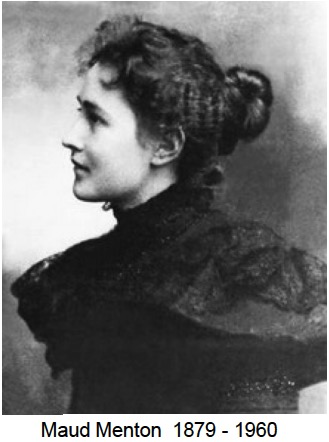B.7 Proteins & enzymes (AHL)
Written specifically for students to provide help and support for the IB Diploma chemistry programme this page provides full coverage of the syllabus content of Option B - sub topic B.7. It encourages you to think critically and provides many questions with full worked answers so that you can monitor and improve your knowledge and understanding.
.png)

 Learning outcomes
Learning outcomes
.png) After studying this topic you should be able to:
After studying this topic you should be able to:
Understand
- Inhibitors have an important role in the regulation of enzyme activities.
- Both amino acids and proteins can function as buffers in aqueous solution.
- Calibration curves, based on known standards, obtained using UV-Vis spectroscopy are commonly used to assay proteins.
Apply your knowledge to:
- Determine the maximum rate of reaction, Vmax, and the value of the Michaelis constant, Km, for an enzyme using graphical means, and explain their significance.
- Compare the competitive and non-competitive inhibition of enzymes with reference to the protein structure, the active site and the allosteric site.
- Explain the concept of product inhibition in metabolic pathways.
- Calculate the pH of buffer solutions, including those used in protein analysis and in reactions involving amino acids in solution.
- Use the Beer–Lambert law to determine the concentration of a protein in solution from a calibration curve.
Relationships & vocabulary
Nature of science
The “induced fit” model for enzymes, which superseded the “lock and key” hypothesis, is a good example of how theories develop in science.
The collaboration between scientists to synthesize new enzymes and to control desired reactions, such as waste control, demonstrates collaboration and taking ethical considerations into account.
International-mindedness
In many parts of the world technologies based on enzyme activity (e.g. brewing and cheese making) go back centuries and are often associated with particular place names.
Vocabulary
induced fit theory | Vmax | Michaelis-Menten constant, Km | substrate |
active site | competitive inhibitor | non-competitive inhibitor | allosteric site |
Learning slides
You can use this slide gallery for learning or for reviewing concepts and information. It covers all the key points in the syllabus for this sub-topic.
Something to think about
 The syllabus refers to the Michaelis constant, Km, which is technically correct, but it comes from the Michaelis-Menton equation and it seems a pity that the –Menton is often left out when the constant is referred to.
The syllabus refers to the Michaelis constant, Km, which is technically correct, but it comes from the Michaelis-Menton equation and it seems a pity that the –Menton is often left out when the constant is referred to.
The Michaelis-Menton equation is one of the most famous mathematical relationships in biochemistry. It describes how the reaction rate of enzyme-catalysed reactions depends upon the concentration of the substrate. Leonor Michaelis was a German biochemist working in Berlin. In 1912 the Canadian, Maud Menton went to Germany to work with him and their paper on enzyme kinetics was published jointly in 1913. Maud Menton is a superb role model for any of your female students who are thinking of pursuing a career as a research scientist.
She achieved a Masters degree from Toronto University and went on to become one of the first women doctors in Canada. Not only is she famous for her work on enzyme kinetics but also she was the first person to separate proteins by using electrophoresis and published over 100 scientific papers in her lifetime. Later she became a Professor at the University of Pittsburgh and worked on cancer research. By all accounts she was a polymath. She spoke six different languages and was an accomplished musician and artist. She and her Model T Ford car, which she drove for over 30 years, were renowned in the Pittsburgh area.
Test your understanding of this topic
(Note that your teacher may have restricted your access to some or all of these questions and worked answers if they are going to use them as a class test or set them as an assignment.)
For ten 'quiz' questions (for quick testing of knowledge and understanding with the answers explained) see MC test: Proteins & enzymes (AHL).
For short-answer questions see Proteins & enzymes (HL) questions together with the worked answers on a separate page Proteins & enzymes (HL) answers.
More resources
1. You can find many videos on enzyme kinetics by searching. This one is a lecture on enzyme kinetics, which includes the Michaelis-Menton equation.
2. A search on the web will also produce many articles on enzyme kinetics. One quite useful one is from Kimballs biology.
3. A video showing how practically how proteins can be assayed using UV-Vis spectroscopy.
4. A good explanation of pH and buffer solutions by Bozeman Science, which refers to amino acids and protein structure.

 IB Docs (2) Team
IB Docs (2) Team 




























